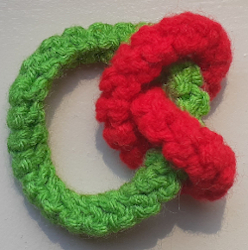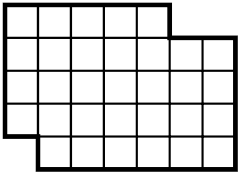Solomon’s Knot
I deleted my previous post about Solomon’s knot. The reason is simple. I made the mistake of trusting Wikipedia. I was sure that the linking number of Solomon’s knot was 2. Then Wikipedia said it was 0, so I fixed “the error” in my post. One of my readers corrected me. So, I rechecked it, removed my post, and fixed the article in Wikipedia. Now, I have a new post about the knot.


Solomon’s knot is actually not a knot in a mathematical sense. It is a link because it consists of two loops. It is famous for being one of the simplest linked links. The simplest one is the unlink, the link where two loops are not linked. The next simplest is the Hopf link. The Solomon’s knot is the next after that.
Usually, the simplicity of a link corresponds to its crossing number, which is the smallest number of crossings of a projection of the link onto a plane. The unlink has a crossing number of 0, the Hopf link has a crossing number of 2, and the Solomon’s knot has a crossing number of 4. However, the linking number created the confusion, so I will explain it.
The linking number is an invariant of a link, which describes how many times one loop goes around the other. It equals zero for the unlink, one for a Hopf link, and two for Solmon’s knot.
I often have difficulty calculating the linking number by looking at a picture of a link. This is why I started to crochet links: finding their linking numbers by fiddling with them is easy. The first image shows the crocheted standard representation of Solomon’s link. The second image shows the same link, but I slid the red loop so it twists around a small portion of the green loop, which now looks like a segment. Then, I can count the number of times the red loop goes around the green segment. What’s important is to keep the direction in mind. In the second picture, one can see that the red loop winds around the green loop twice but in the same direction, making the linking number two.
So far, it looks like the linking number grows with the crossing number. Here is where my favorite link, the Whitehead link, comes in. It breaks the previous pattern. It has the crossing number of 5, so it is slightly more complex than Solomon’s link. But its linking number is zero, which is unusual for a linked link. In fact, the Whitehead link is the simplest linked link with the linking number zero, but I already wrote about it in my post Whitehead Links for Ukraine.
Share:


